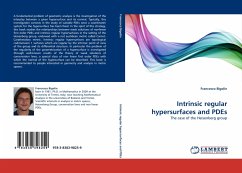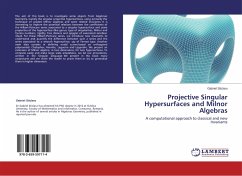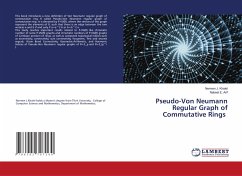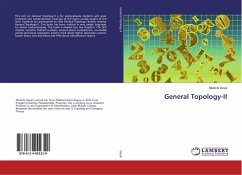
Intrinsic regular hypersurfaces and PDEs
The case of the Heisenberg group
Versandkostenfrei!
Versandfertig in 6-10 Tagen
45,99 €
inkl. MwSt.

PAYBACK Punkte
23 °P sammeln!
A fundamental problem of geometric analysis is the investigation of the interplay between a given hypersurface and its normal. Typically, this investigation consists in the study of suitable PDEs once a coordinates' system for the hypersurface has been fixed. In the spirit of this strategy, this book studies the relationships between weak solutions of nonlinear first order PDEs and intrinsic regular hypersurfaces in the setting of the Heisenberg group, endowed with a not euclidean metric called Carnot-Caratheodory metric. Intrinsic regular hypersurfaces are topological codimension 1 surfaces w...
A fundamental problem of geometric analysis is the investigation of the interplay between a given hypersurface and its normal. Typically, this investigation consists in the study of suitable PDEs once a coordinates' system for the hypersurface has been fixed. In the spirit of this strategy, this book studies the relationships between weak solutions of nonlinear first order PDEs and intrinsic regular hypersurfaces in the setting of the Heisenberg group, endowed with a not euclidean metric called Carnot-Caratheodory metric. Intrinsic regular hypersurfaces are topological codimension 1 surfaces which are regular by the intrinsic point of view of the group and its differential structure. In particular the problem of the regularity of the parametrization of a hypersurface is investigated through well-known results of the theory of weak solutions of conservation laws, a special class of non linear first order PDEs with which the normal of the hypersurface can be described. This book isrecommended to people interested in geometry and analysis in metric spaces.












